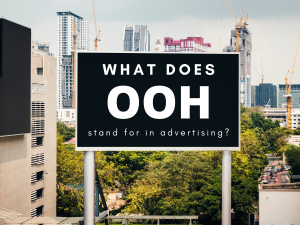Advertising in Metro Station Majestic, Bengaluru: Boost Your Brand’s Reach Bengaluru, known as India’s Silicon Valley, is a thriving hub...
Ad agency
The roles and responsibilities of an advertising agency are diverse and cover various aspects of creating, planning, and executing advertising campaigns. These responsibilities of an Ad agency can be broadly categorized into several key areas:
1. Strategy Development:
Market Research: Conducting thorough research to understand the market, target audience, competitors, and current trends.
Brand Strategy: Developing a clear brand positioning and strategy that aligns with the client’s goals and market insights.
Campaign Planning: Creating a comprehensive advertising plan that outlines objectives, strategies, key messages, and timelines.
2. Creative Services:
Concept Development: Generating creative ideas and concepts that resonate with the target audience.
Copywriting by an Ad agency: Writing compelling and persuasive copy for various advertising materials, including print ads, digital content, and scripts for TV and radio.
Design and Art Direction: Creating visual elements such as graphics, layouts, and illustrations to enhance the campaign’s appeal.
Production: Overseeing the production of advertisements, whether they are print, digital, broadcast, or out-of-home (OOH) ads. Ad agency.
3. Media Planning and Buying:
Media Strategy: Identifying the most effective media channels to reach the target audience and achieve campaign objectives.
Media Buying: Negotiating and purchasing advertising space and time across various media platforms, including TV, radio, online, and print.
Ad Placement: Ensuring ads are placed in the right locations and at the right times to maximize exposure and effectiveness.
4. Digital and Social Media:
Digital Marketing: Implementing online advertising strategies, including search engine marketing (SEM), display ads, email marketing, and content marketing.
Social Media Management: Creating, managing, and optimizing content across social media platforms to engage with the audience and build brand presence.
SEO and Analytics: Enhancing the visibility of online content through search engine optimization (SEO) and tracking performance using analytics tools.
5. Account Management:
Client Liaison: Acting as the primary point of contact between the agency and the client, ensuring clear communication and understanding of client needs.
Project Management: Coordinating all aspects of campaign execution, from initial brief to final delivery, ensuring timelines and budgets are adhered to.
Reporting and Feedback: Providing regular updates and reports to the client on campaign performance, including metrics and insights for continuous improvement.
6. Public Relations:
Media Relations: Building and maintaining relationships with media outlets to secure coverage and publicity for the client.
Event Management: Planning and executing events such as product launches, press conferences, and promotional activities.
7. Creative Innovation:
Trend Analysis: Staying updated with industry trends and technological advancements to incorporate innovative ideas into campaigns.
Innovation in Ad Formats: Experimenting with new and emerging ad formats, such as interactive ads, augmented reality (AR), and virtual reality (VR) experiences.
8. Budget Management:
Cost Estimation: Estimating the costs for various elements of the campaign and managing the budget effectively.
Resource Allocation: Allocating resources, including time, money, and talent, to ensure efficient and effective campaign execution.
9. Legal and Ethical Compliance:
Regulatory Adherence: Ensuring all advertising content complies with legal regulations and industry standards.
Ethical Standards: Upholding ethical standards in advertising, avoiding false claims, and ensuring responsible messaging.
In summary, an advertising agency serves as a strategic partner to its clients, offering a wide range of services from strategy development and creative execution to media planning and digital marketing. Their goal is to create impactful campaigns that effectively communicate the client’s message, engage the target audience, and achieve the desired marketing objectives.
Advertising in Metro Station Andheri West, Mumbai. Mumbai, the financial capital of India, is known for its bustling streets, vibrant...
How to Choose the Right Events for Your Advertising Campaigns In today's competitive market, choosing the right events for your...
Digital advertising gripped the audience for the longest time during the outbreak of covid-19. The restrictions to move out and...
As Sunil Lulla, the former CEO of BARC (Broadcast Audience Research Council India) heads out to pursue entrepreneurship; the position...
Society gate branding in Chennai !! Chennai is 41st most populous city proper in the world by population. It is...
Delhi Metro Station Branding - Since its commencement in the year 2002, Delhi Metro has been the pulse of the...








